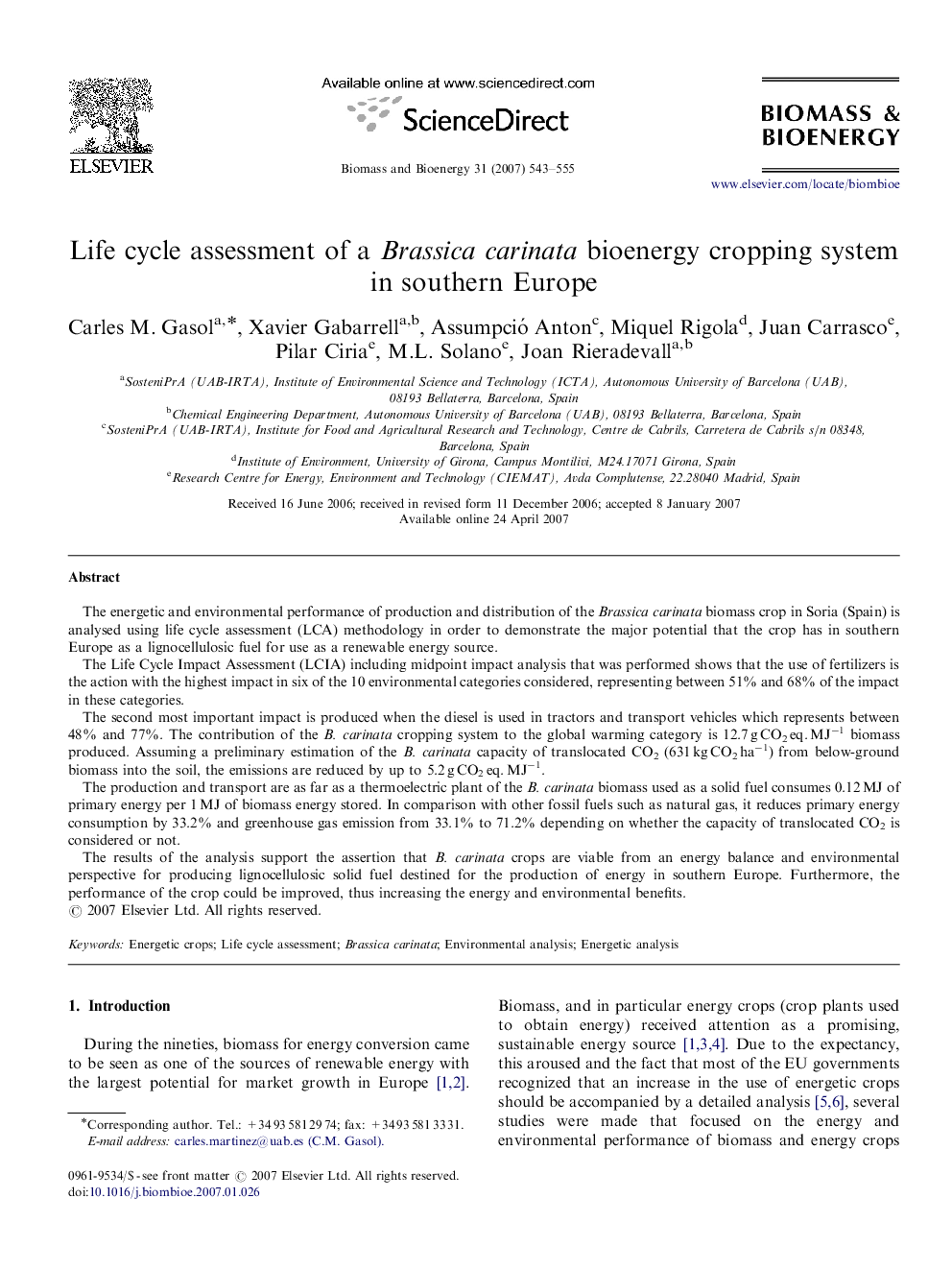| کد مقاله | کد نشریه | سال انتشار | مقاله انگلیسی | نسخه تمام متن |
|---|---|---|---|---|
| 678605 | 888657 | 2007 | 13 صفحه PDF | دانلود رایگان |

The energetic and environmental performance of production and distribution of the Brassica carinata biomass crop in Soria (Spain) is analysed using life cycle assessment (LCA) methodology in order to demonstrate the major potential that the crop has in southern Europe as a lignocellulosic fuel for use as a renewable energy source.The Life Cycle Impact Assessment (LCIA) including midpoint impact analysis that was performed shows that the use of fertilizers is the action with the highest impact in six of the 10 environmental categories considered, representing between 51% and 68% of the impact in these categories.The second most important impact is produced when the diesel is used in tractors and transport vehicles which represents between 48% and 77%. The contribution of the B. carinata cropping system to the global warming category is 12.7 g CO2 eq. MJ−1 biomass produced. Assuming a preliminary estimation of the B. carinata capacity of translocated CO2 (631 kg CO2 ha−1) from below-ground biomass into the soil, the emissions are reduced by up to 5.2 g CO2 eq. MJ−1.The production and transport are as far as a thermoelectric plant of the B. carinata biomass used as a solid fuel consumes 0.12 MJ of primary energy per 1 MJ of biomass energy stored. In comparison with other fossil fuels such as natural gas, it reduces primary energy consumption by 33.2% and greenhouse gas emission from 33.1% to 71.2% depending on whether the capacity of translocated CO2 is considered or not.The results of the analysis support the assertion that B. carinata crops are viable from an energy balance and environmental perspective for producing lignocellulosic solid fuel destined for the production of energy in southern Europe. Furthermore, the performance of the crop could be improved, thus increasing the energy and environmental benefits.
Journal: Biomass and Bioenergy - Volume 31, Issue 8, August 2007, Pages 543–555